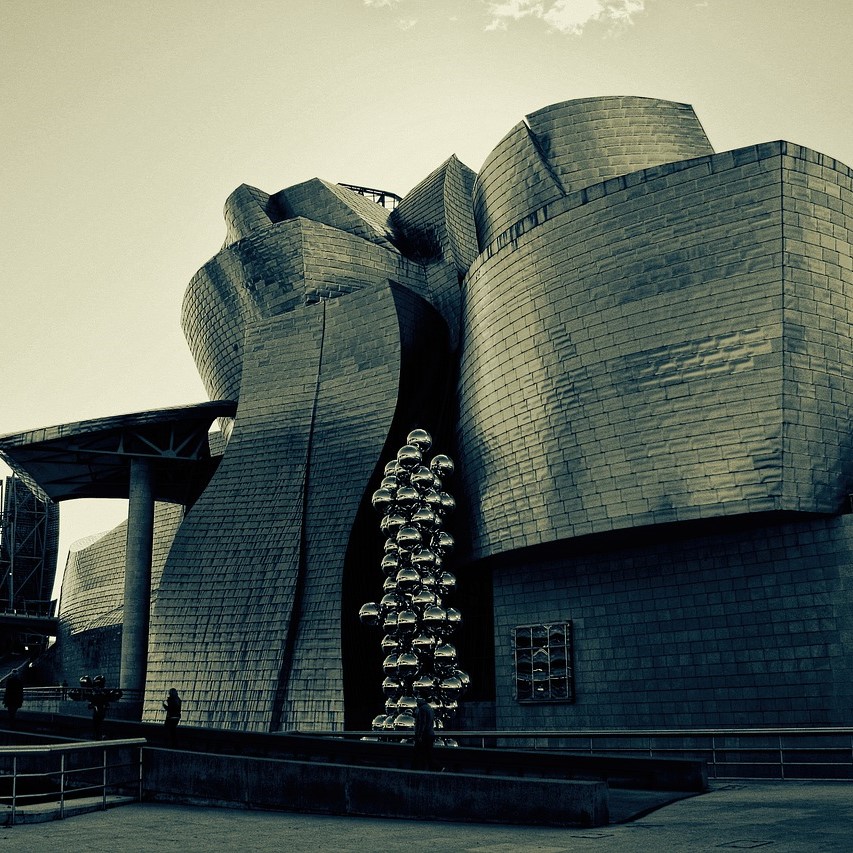The palatial white swirl of the Guggenheim is perfect for exhibiting contemporary Chinese art, as the museum’s winding levels mimic the themes built upon, revisited again and again, in the pieces hanging there. Whether all that building amounts to anything, or if the spiral is simply a visualization of a national art tracking back over itself and saying little, is up to the viewer. Beauty (and art) is always in the eye of the beholder, but in this exhibition, which attempts to translate Chinese art for a Western audience, that maxim holds even more true. It is an ambitious task—and an admirable one. But no matter how well curated, or how informative the captions on the wall, “Art and China After 1989: Theatre of the World” will always be harder for the viewer to reach than, say, an Ashcan School survey or a collection of Hokusai. The exhibition is full of difficult work and its meaning is sometimes nearly impenetrable. To walk into the Guggenheim entirely unfamiliar with Chinese art, or only having heard of Ai Weiwei, is to miss much of the art’s power.
Contemporary art, in its constant expansion of the boundaries of form and content, is especially referential, commenting upon comments until the original referent is nearly lost. This Chinese contemporary art is not terribly distant from its referents, whether they come from the Mao Era or the Tang Dynasty, but an understanding of their allusions is almost a necessity for enjoying the entirety of the Guggenheim’s exhibition. One of the artists’ main goals for their work was to carve out a place for Chinese art on the world stage after China emerged from the isolation of the Mao Era—to define what Chinese art stood for, to envision what the continuation of Chinese artistic lineage would look like.
As a result, there are works like Qiu Zhijie’s Assignment No. 1: Copying the “Orchid Pavilion Preface” 1,000 Times, in which Qiu writes the titular piece of calligraphy over and over again on the same sheet until a solid rectangle of black ink has formed, with only the edges of characters peeking out from its sides. Found in this one work is a reference to an enormously famous piece of literary and artistic culture and its attendant meanings, an allusion to the repetition and memorization typical of Chinese schooling, a subversive interrogation of those two concepts, and explorations of formal concepts of authorship, spectatorship, and abstraction. It can be hard to make heads or tails of the piece without knowledge of China, even after reading the wall text, and it’s not even one of the pieces with (visible) Chinese characters or controversial subject matter.
That is not to say that a visitor must be a China watcher to like the exhibition or find its pieces interesting. But without that knowledge, I can see how some works might ring hollow, seemingly weighed down by floating signifiers. The cultural specificity of the show is what makes it worth seeing; by the same token, that specificity could also leave visitors feeling underwhelmed or disconnected.
What I do think is apparent to any viewer, and what I think is the most exciting aspect of the show, is its experimentation. The sense of creative possibility that comes with this period from 1989-2008, of pushing boundaries and upending convention, is conveyed quite well here. Even without “getting” a piece or thinking it bizarre, it’s undeniable that there’s an experimental energy behind it that comes from a need to express something and to do it in a way that’s never been tried before. Bookended by the Tiananmen Square Incident and the Beijing Olympics, the period examined here is not characterized by the same freedom of creative or critical expression as the 1980s. Yet it is still far more liberal than the socialist period or even the Xi Jinping era today. And given the intense, rapid change of these (nearly) two decades, with their runaway urbanization, sweeping economic reforms, and consumerist bent, this collection of artists had no lack of topics to respond to. Their world was transforming around them in ways strange, disconcerting and sometimes great, and their art reflects an urgent need to process those tectonic shifts. Here they are, adding their voices to the cacophony about what China is now, what Chinese ideology is, what Chinese values are, and where renwen jingshen (human spirit) has gone to.
The exhibition fizzles a bit toward the end, as it shifts its focus to the cultivation of artist communities. While it’s an idea worth exploring, it’s less visually interesting than what has come before it. Namely, the shock of Han vases painted with Coca-Cola logos, the slightly unsettling tanks molded out of congealed oil, and the gargantuan bicycle-based sculpture suspended in the middle of the rotunda. Images like these are what will stick with the viewer once they’ve left the museum and removed themselves from this environment with its wall text, informative catalogs, and audio guides. The viewer might not know exactly why these images were created, or what they mean to the artist and to the country they come from, but they will be indelible and memorable just the same. The viewer will know what Chinese art looks like, courtesy of a group of artists who attempted to answer that question themselves.
Amanda Walencewicz is a recent graduate of Tufts University and the Life and Culture editor for China Hands. She can be reached at awalencewicz@gmail.com.

